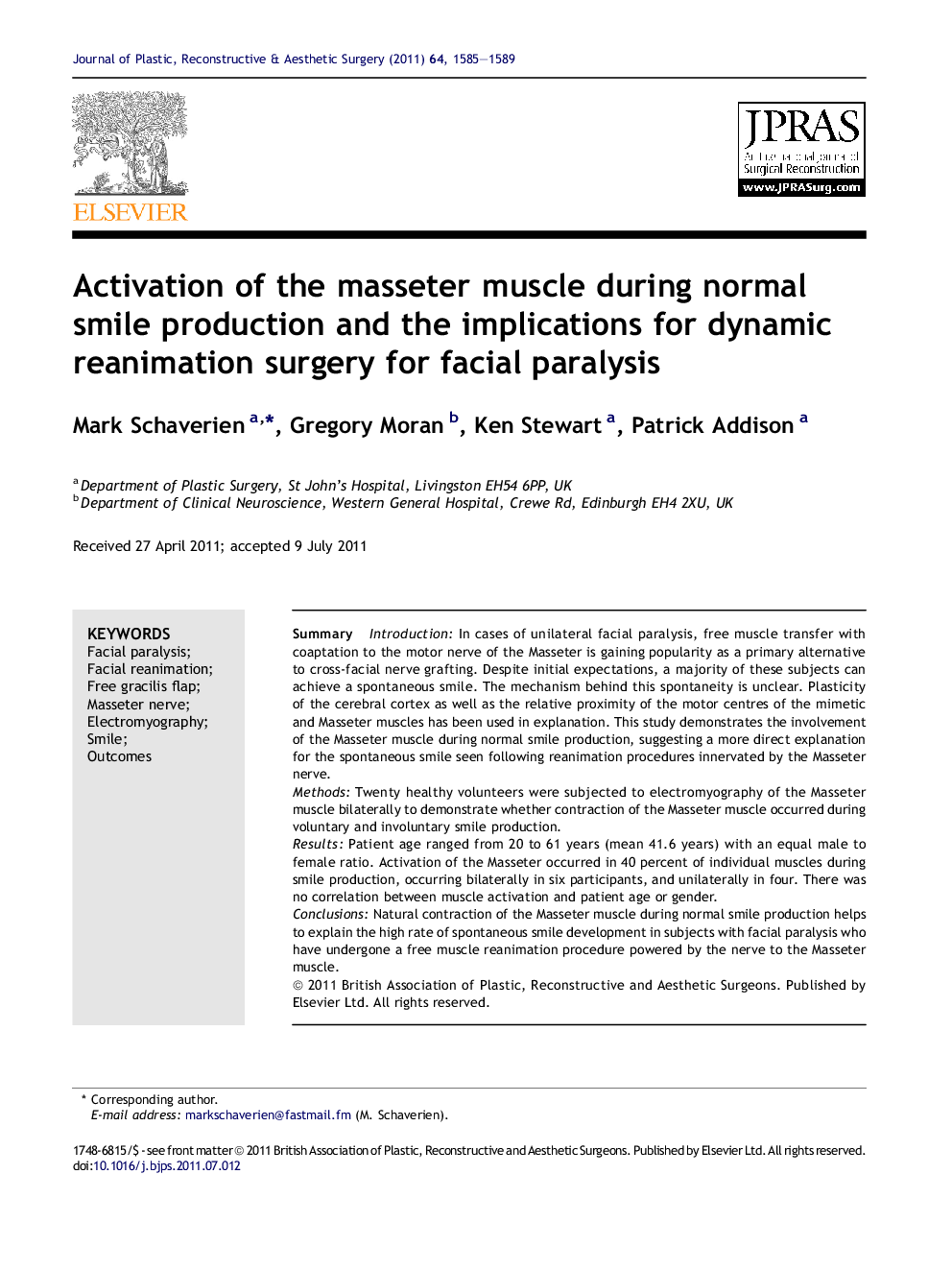| Article ID | Journal | Published Year | Pages | File Type |
|---|---|---|---|---|
| 4118879 | Journal of Plastic, Reconstructive & Aesthetic Surgery | 2011 | 4 Pages |
SummaryIntroductionIn cases of unilateral facial paralysis, free muscle transfer with coaptation to the motor nerve of the Masseter is gaining popularity as a primary alternative to cross-facial nerve grafting. Despite initial expectations, a majority of these subjects can achieve a spontaneous smile. The mechanism behind this spontaneity is unclear. Plasticity of the cerebral cortex as well as the relative proximity of the motor centres of the mimetic and Masseter muscles has been used in explanation. This study demonstrates the involvement of the Masseter muscle during normal smile production, suggesting a more direct explanation for the spontaneous smile seen following reanimation procedures innervated by the Masseter nerve.MethodsTwenty healthy volunteers were subjected to electromyography of the Masseter muscle bilaterally to demonstrate whether contraction of the Masseter muscle occurred during voluntary and involuntary smile production.ResultsPatient age ranged from 20 to 61 years (mean 41.6 years) with an equal male to female ratio. Activation of the Masseter occurred in 40 percent of individual muscles during smile production, occurring bilaterally in six participants, and unilaterally in four. There was no correlation between muscle activation and patient age or gender.ConclusionsNatural contraction of the Masseter muscle during normal smile production helps to explain the high rate of spontaneous smile development in subjects with facial paralysis who have undergone a free muscle reanimation procedure powered by the nerve to the Masseter muscle.
